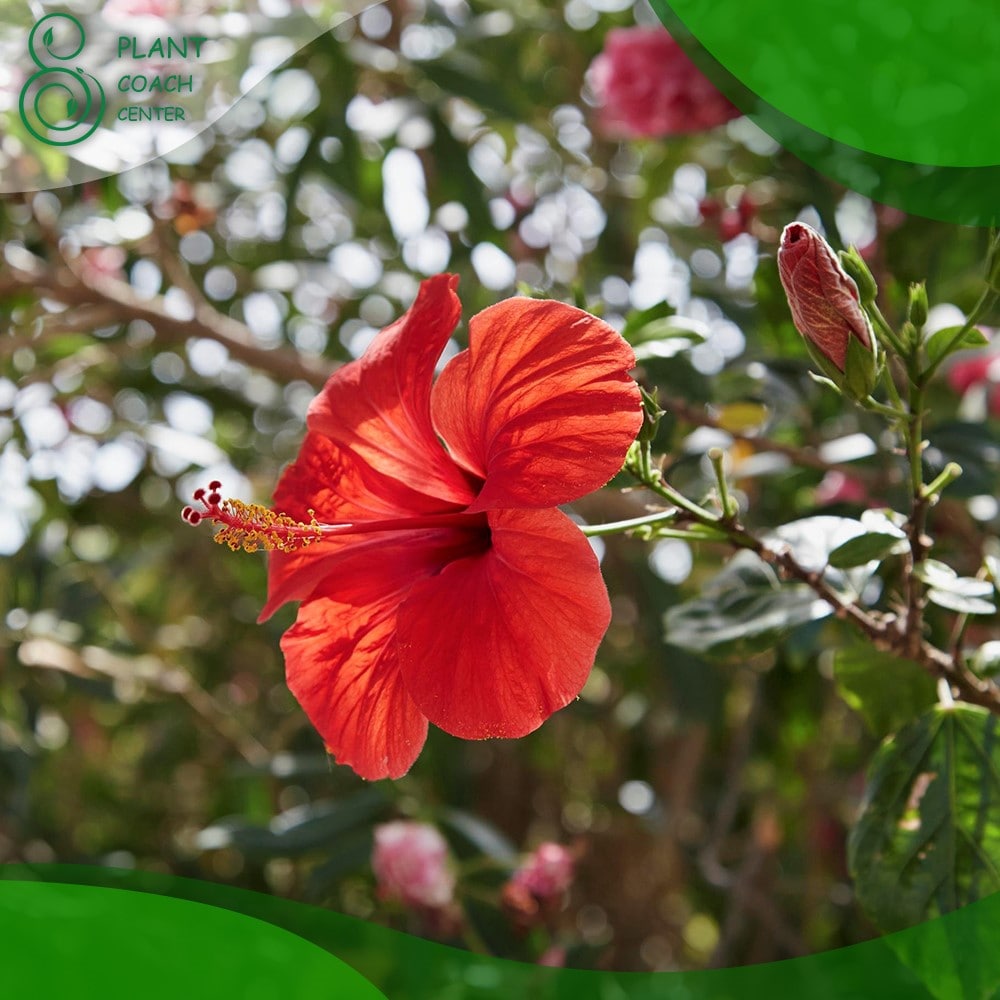Introduction to When to Prune Hibiscus Tree
Hibiscus trees, with their vibrant blooms and lush foliage, are a delightful addition to any garden or landscape. These tropical or hardy beauties are known for their ability to paint your outdoor space with a riot of colors. Yet, to keep them thriving and to ensure they grace your surroundings with their full splendor, understanding the art of pruning at the right time is key.
this article of plantcoachcenter.com delves into the crucial matter of timing when it comes to pruning hibiscus trees. Pruning, often underestimated, plays a pivotal role in shaping the health and appearance of your hibiscus tree. It’s not just about the shears and snips; it’s about knowing when to use them.
In the following sections, we’ll guide you through the intricacies of hibiscus pruning timing, offering insights, tips, and practical advice to help you become a maestro in nurturing these botanical wonders. So, let’s embark on this journey, and soon, you’ll master the art of knowing when to prune your hibiscus tree for a garden that blooms with splendor year-round.
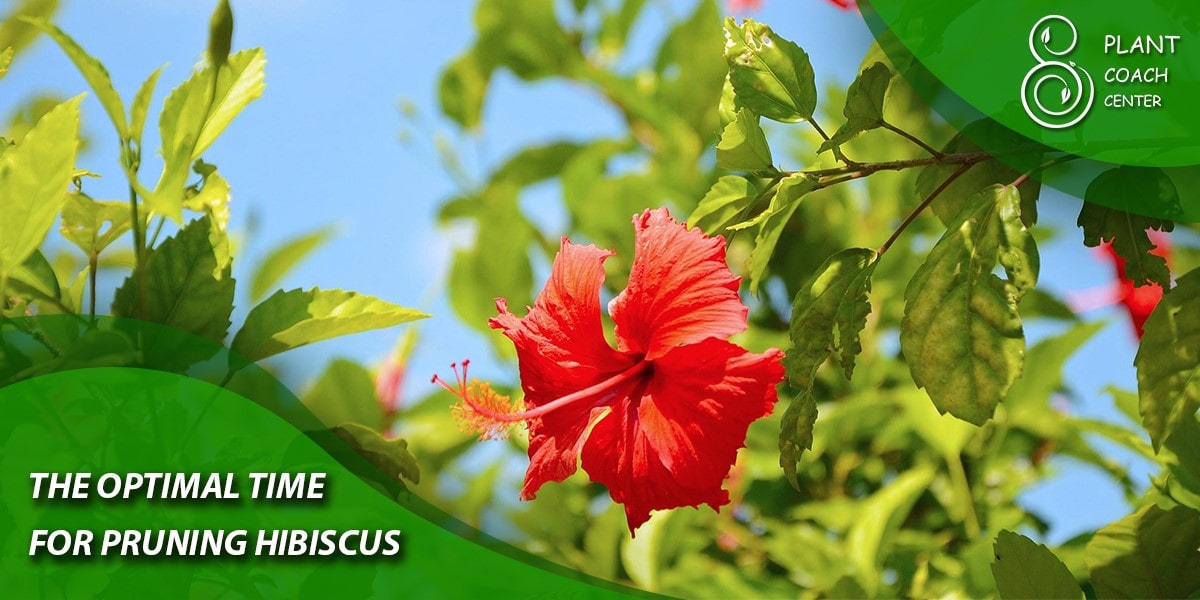
The Optimal Time for Pruning Hibiscus
Hibiscus, known for their vibrant and captivating blooms, are a cherished addition to many gardens across various regions. To maintain the splendor of these botanical wonders, timing is a critical factor when it comes to pruning. In several climates, including the subtropical and temperate regions, two key seasons emerge as ideal for hibiscus pruning: spring and fall.
Pruning Hibiscus in the Spring
Embracing Renewal:
Spring signifies a period of rejuvenation for hibiscus. As temperatures rise, and daylight hours extend, these resilient plants awaken from their winter slumber. Here’s why spring serves as the prime season for pruning:
Active Growth Phase: Spring marks the onset of hibiscus’s active growth phase. The warmth and prolonged daylight hours stimulate the emergence of fresh shoots and blossoms. Pruning during this season taps into the plant’s inherent vitality, channeling its energy towards new growth.
Ideal Weather Conditions: Spring offers favorable conditions, combining warmth and moisture. This climate accelerates the healing of pruning wounds while mitigating the risk of disease transmission. Pruning in spring assures the health and vigor of your hibiscus.
Shaping and Maintenance: Spring pruning provides the perfect opportunity to sculpt your hibiscus according to your preferences. Whether you aim for a compact, bushy form or a more open and airy structure, spring’s canvas allows for precise shaping.
Disease Prevention: By eliminating winter-damaged or diseased branches in spring, you effectively halt the spread of issues and ensure a disease-free start to the growing season.
Pruning Hibiscus in the Fall
Preparing for Winter’s Arrival:
Although spring pruning is the conventional choice, fall pruning possesses distinct advantages, particularly in anticipation of winter:
Pre-Winter Preparation: Late fall, usually in November or early December, marks the moment when hibiscus prepares for the cooler months. Pruning away dead or weak growth aids the plant in conserving energy during winter’s relative dormancy.
Encouraging Spring Growth: Trimming spent blooms and tidying up your hibiscus in late fall sets the stage for a burst of new growth when spring arrives. This proactive approach ensures your hibiscus embarks on the growing season with enthusiasm.
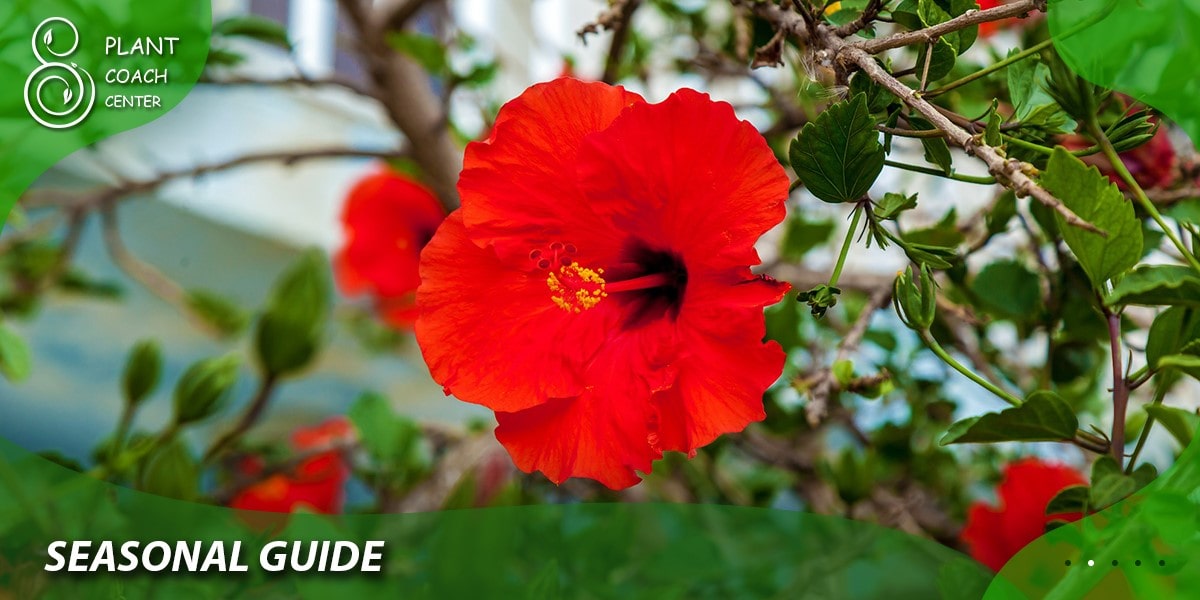
In essence, the ideal time for pruning hibiscus in various regions depends on your specific objectives and the unique characteristics of your plants. Spring pruning harnesses the plant’s growth momentum, while fall pruning readies it for the impending winter. By selecting the appropriate season for your hibiscus and adhering to pruning best practices, you’ll revel in the presence of healthy, flourishing hibiscus that continue to grace your garden year after year.
Seasonal guide
Pruning your hibiscus at the right time is essential for its health and vitality. To become a true hibiscus pruning maestro, you need to master the art of timing. Let’s dive into a detailed seasonal guide that covers both spring and fall pruning, along with some essential considerations.
Instructions for Pruning Hibiscus in Each Season (Spring and Fall)
Spring Pruning:
As the frosty grip of winter loosens its hold, your hibiscus begins to stir with newfound life. This is the ideal moment for spring pruning, and here’s how to do it right:
Observe New Growth: Keep a watchful eye for the first signs of new growth on your hibiscus. As temperatures rise and days lengthen, your hibiscus will start to awaken from its winter slumber. This emerging growth is your green light.
Wait for Frost-Free Conditions: Before you even think about reaching for those pruning shears, make sure the threat of frost has passed. Pruning too early in spring, while frost still lingers, can harm the tender new growth.
Opt for Early Spring: The sweet spot for spring pruning usually falls in the early spring months, just before or as new leaves and buds start to emerge. At this juncture, your hibiscus is ready to invest its energy in robust growth.
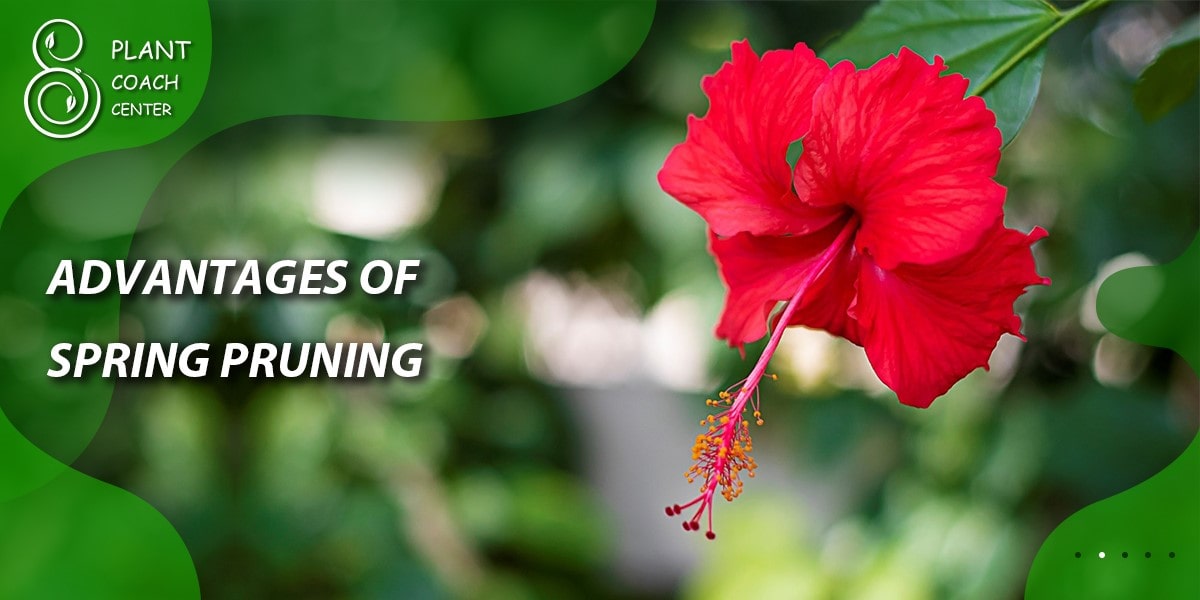
Advantages of Spring Pruning:
Promotes Vigorous Growth: Spring is the time when hibiscus trees come out of their winter dormancy. By eliminating dead or overgrown branches during this phase, you guide the plant’s energy toward fresh growth, resulting in a healthier, bushier, and more vibrant hibiscus.
Enhances Flowering: Think of spring pruning as a wake-up call for your hibiscus. Trimming during this season spurs the development of new buds, promising a burst of colorful blooms in the upcoming season.
Shape Control: Hibiscus trees have a tendency to sprawl if left unchecked. Spring pruning empowers you to maintain your hibiscus’s desired shape and size. By bidding farewell to unwanted branches early in the season, you ensure your hibiscus remains a visually pleasing asset to your garden.
Fall Pruning:
Fall pruning offers unique benefits and serves a different purpose in the life of your hibiscus:
Monitor Temperature Drops: As the days shorten and temperatures gradually cool, pay attention to the thermometer. When you observe consistent cooler nights and catch the first frost on the horizon, it’s a sign that fall is on its way.
Aim for Late Fall: The prime time for fall pruning falls in late autumn, preferably after the first frost but before your hibiscus goes into a deep dormancy. This timing allows your plant to recover from the pruning and prepare for the winter ahead.
Respect the Dormant Period: Avoid pruning too late into fall when your hibiscus has entered a deep dormancy. Late pruning may stimulate new growth, which can be vulnerable to winter damage.
Benefits of Fall Pruning:
Disease Prevention: Fall pruning’s primary role is to remove any diseased or pest-infested branches. This proactive step helps prevent these problems from lingering into the next growing season.
Winter Preparation: Fall pruning gears your hibiscus for the impending winter conditions. Trimming during this season minimizes the risk of heavy snow or ice causing damage to the branches during winter storms.
Stimulates New Growth: Light pruning in the fall can encourage fresh growth in the spring, contributing to a healthier and more robust hibiscus once the growing season returns.
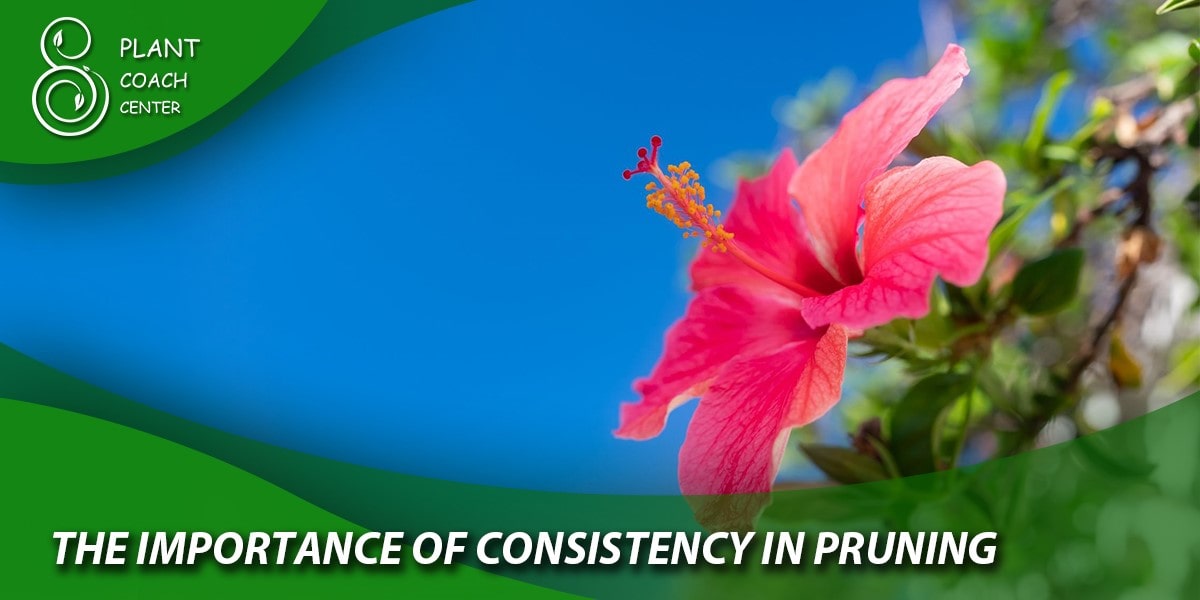
The Importance of Consistency in Pruning
Pruning isn’t a one-time affair; it’s a continual commitment to the health and aesthetics of your hibiscus. Let’s delve into why consistency in pruning is paramount:
Promotes Plant Health: Consistent pruning ensures your hibiscus remains in peak condition year-round. By removing dead, diseased, or overcrowded branches, you prevent diseases from spreading and encourage strong, vibrant growth.
Encourages Predictable Growth: Consistent pruning shapes your hibiscus according to your preferences. Regularly eliminating unwanted branches maintains your desired size and appearance, preventing unruliness.
Maximizes Flowering Potential: A well-maintained pruning schedule ensures your hibiscus allocates its energy to producing an abundance of blooms. This translates to more stunning hibiscus flowers that likely inspired you to cultivate this plant.
Early Problem Detection: Consistent inspection during pruning enables you to spot and address issues proactively. You can identify signs of diseases, pests, or structural problems before they escalate.
Setting Up a Seasonal Pruning Calendar
Crafting a seasonal pruning calendar serves as your roadmap for consistent and effective hibiscus care:
Note Local Climate: Understand your local climate and how it impacts your hibiscus. If you’re in an area with mild winters, your pruning schedule may differ from someone facing harsher winter conditions.
Mark the Dates: Based on your climate and hibiscus variety, pinpoint the dates for spring and fall pruning on your calendar. Aim for the optimal timings discussed earlier.
Record Observations: Maintain a gardening journal to document your pruning activities and your hibiscus’s condition throughout the year. This helps you monitor the plant’s progress and make necessary adjustments.
Tools and Maintenance: Ensure your pruning tools are in top-notch condition. They should be clean, sharp, and well-maintained before each pruning session. Regularly clean and oil your tools to prevent disease spread.
Flexibility: Be ready to adapt your pruning calendar based on specific circumstances. If you notice unusual growth patterns or issues during the year, don’t hesitate to tweak your schedule as needed.
Maintaining a seasonal pruning schedule demands dedication, but the rewards are worth it. You’ll nurture flourishing hibiscus plants that dazzle with their beauty year-round. Stay consistent and attuned to your plant’s needs, and you’ll witness a thriving hibiscus that graces your garden with its radiant presence throughout the seasons.
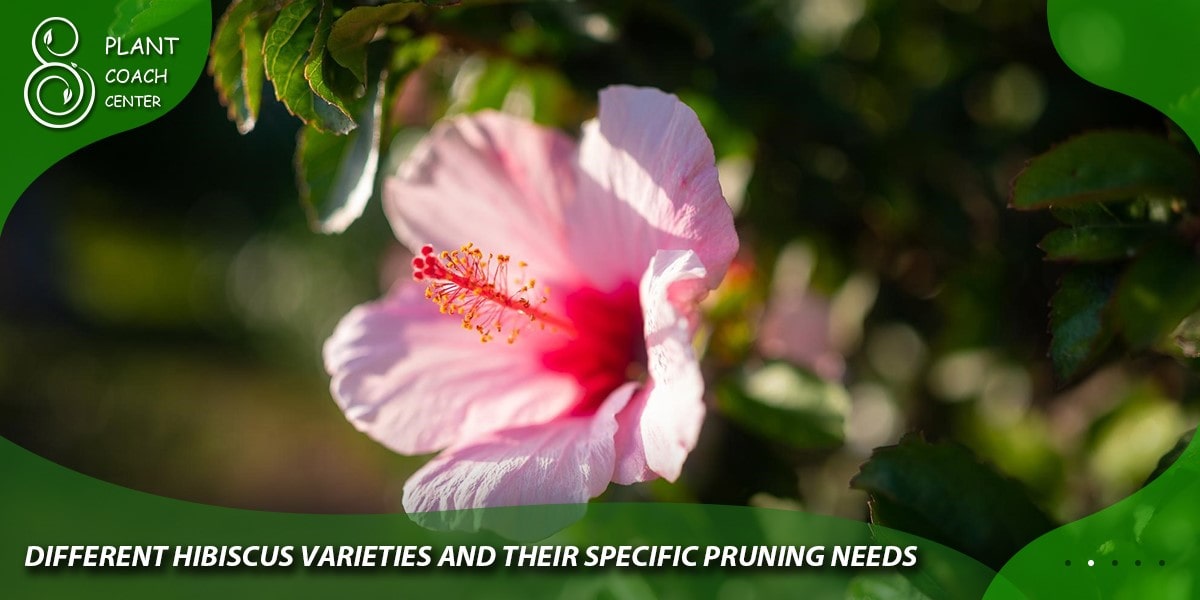
Different Hibiscus Varieties and Their Specific Pruning Needs
Not all hibiscus are created equal when it comes to pruning. The vast world of hibiscus varieties presents distinct characteristics and growth patterns. Understanding these nuances is vital to tailor your pruning efforts effectively:
Tropical Hibiscus (Hibiscus rosa-sinensis): This variety boasts large, dazzling, and colorful blooms. Thriving in warm, tropical climates, it’s a garden favorite. Pruning typically occurs in early spring when frost risks have passed, and new growth begins. Trim sparingly to maintain a compact shape and encourage abundant flowering.
Hardy Hibiscus (Hibiscus syriacus): Also known as Rose of Sharon, this cold-tolerant variety is prized for its resilience. Fall is the prime season for pruning this hibiscus species, ideally after the first frost and before winter sets in. This allows the plant to rejuvenate during its dormant phase.
Native Hibiscus (Hibiscus moscheutos): Indigenous to North America, native hibiscus flaunts large, vibrant flowers. Prune these hibiscus plants in late winter or early spring, cutting back to about 6 inches above the ground. This promotes vigorous growth and abundant summer blossoms.
How to Adjust Timing Based on Hibiscus Species
Timing your pruning according to your hibiscus species is crucial for their well-being:
Research Your Hibiscus: Start by identifying the precise hibiscus species in your garden. Understanding their growth habits, hardiness, and blooming patterns will inform your pruning schedule.
Consult Local Expertise: Seek guidance from local gardening experts or horticultural societies. They can offer insights tailored to your region, helping you determine the optimal timing for hibiscus pruning in your specific area.
Trial and Observation: When precise information is lacking, consider conducting a trial period. Prune a small section of your hibiscus based on your best estimate for timing and observe how the plant responds. Gradually fine-tune your approach based on these observations.
Flexibility is Key: Hibiscus plants are forgiving. If you’re uncertain about the ideal pruning timing for a particular species, err on the side of caution. Gradually refine your approach based on your plant’s individual response.

Understanding your hibiscus variety and its unique needs is akin to speaking its language. By adjusting your pruning timing according to species-specific guidelines, you’ll ensure your hibiscus thrives and continues to grace your garden with its distinctive beauty.
Signs It’s Time to Prune
Visual Cues
Pruning your hibiscus at the right time isn’t solely about adhering to a calendar; it’s also about reading the signals your plant gives you. Hibiscus, like a master communicator, provides visual cues that it’s ready for a trim:
Overcrowding: When you notice branches growing too close to one another, creating a dense, tangled mass, it’s a sign that pruning is in order. Overcrowded growth restricts airflow and sunlight, potentially leading to disease and weak growth.
Sparse Blooms: If your hibiscus seems less prolific in its flowering than usual, it might be craving some pruning attention. Overgrown branches can divert the plant’s energy away from producing blossoms.
Drooping or Sagging Branches: As branches become laden with leaves and blooms, they may start to droop, particularly after a heavy rain or wind. Pruning can alleviate this weight burden and help maintain an upright, balanced form.
Yellowing or Wilting Leaves: Examine the foliage closely. Yellowing, wilting, or dead leaves can indicate that certain branches aren’t receiving adequate nutrients or sunlight. Pruning those branches redirects resources to healthier parts of the plant.
Crossing or Rubbing Branches: When branches start to cross over each other or rub together, it can lead to damage and disease. Prune the offending branches to prevent further harm.
When to prune overgrown branches and spent flowers
Knowing when to prune overgrown branches and spent flowers is crucial for hibiscus care. Here’s how to gauge the timing:
Overgrown Branches: Prune branches that have grown excessively long or have strayed from the desired shape of your hibiscus. The best time for this is during the appropriate pruning season, typically spring or fall, depending on the hibiscus variety.
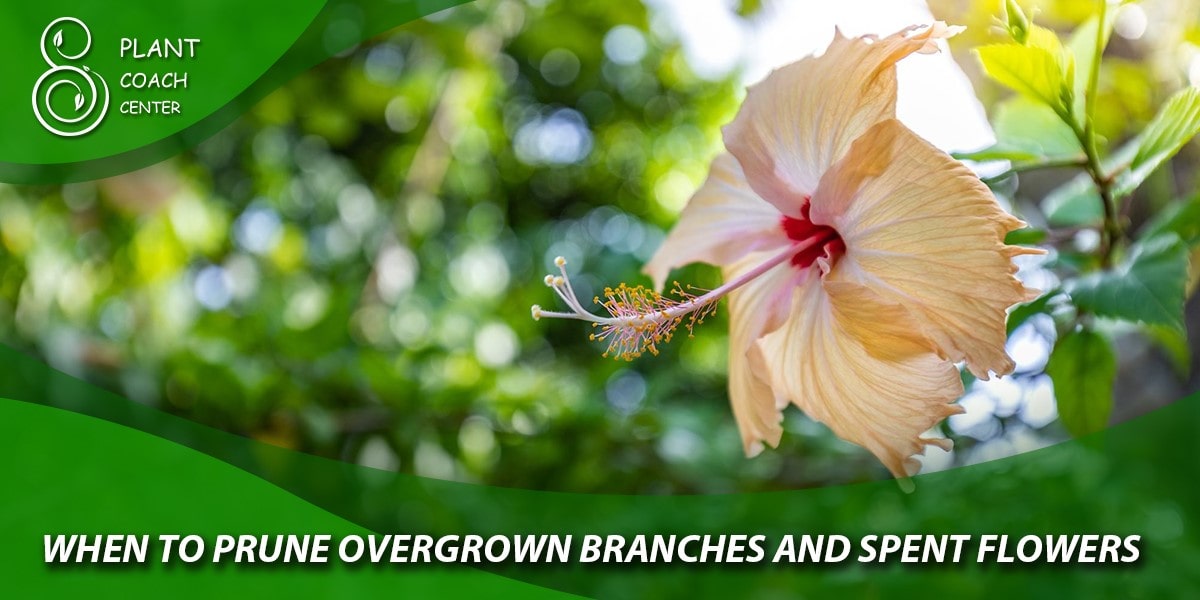
Spent Flowers: Hibiscus blossoms don’t last forever. When you notice flowers starting to fade, wilt, or turn brown, it’s a clear signal to deadhead them. Removing spent flowers not only tidies up the appearance but also encourages the plant to produce new blooms.
Regular Deadheading: For continuous flowering varieties, consider regular deadheading. This means removing spent flowers as soon as they wilt, which keeps the plant looking fresh and can extend the blooming period.
Avoid Over-Pruning: While it’s important to address overgrown branches and spent flowers, avoid over-pruning. Hibiscus can handle a fair amount of trimming, but excessive cutting can stress the plant and reduce its vigor. Prune judiciously, targeting problem areas.
By recognizing these visual cues and understanding the timing for addressing overgrown branches and spent flowers, you’ll be equipped to provide your hibiscus with the care it needs precisely when it needs it. This attentiveness will result in a healthier, more vibrant hibiscus in your garden.
Conclusion
In conclusion, the timing of pruning in hibiscus tree care is nothing short of pivotal. As we’ve explored the art of pruning throughout the seasons, it becomes evident that the well-being and vitality of your hibiscus hinge on understanding when to wield those pruning shears.
From the rejuvenation of spring to the preparation for dormancy in the fall, each season carries its own significance, and recognizing the visual cues your hibiscus offers is equally essential. To truly witness your hibiscus thrive, I encourage you to embrace the recommended pruning schedule, recognizing it as the compass guiding your hibiscus towards a future of health, beauty, and bountiful blooms.
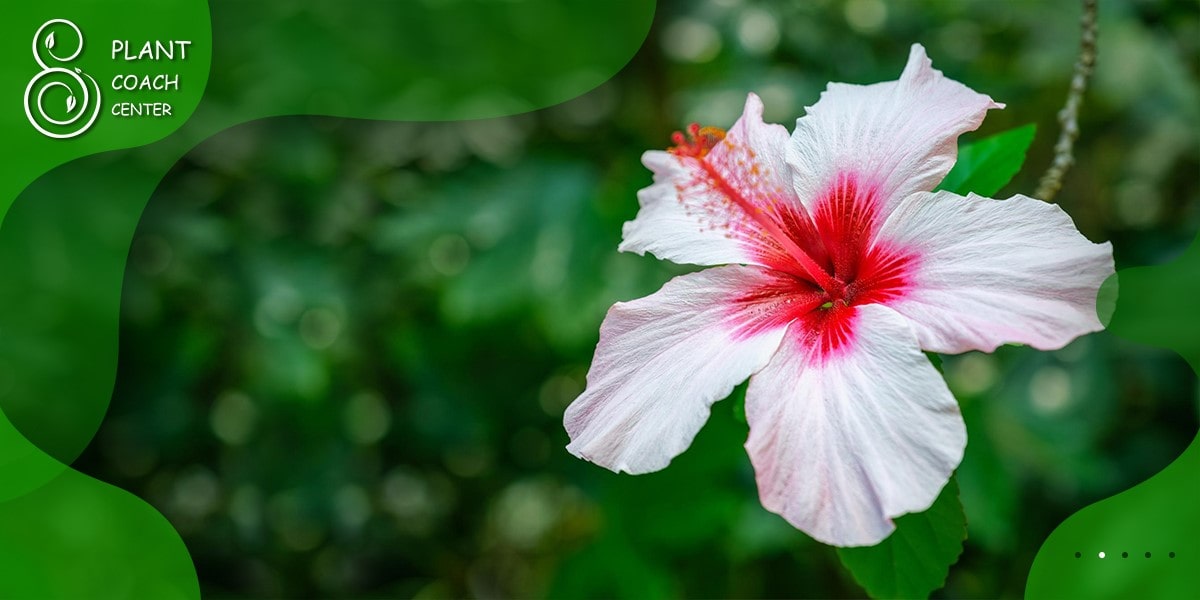
FAQs
When should I prune my hibiscus in spring?
When should I prune my hibiscus in spring?
Can I prune my hibiscus in the summer?
It's best to avoid summer pruning, as it can disrupt blooming.
What if I live in a region with mild winters?
Adjust fall pruning timing accordingly, but avoid heavy pruning late in the season.
How often should I deadhead spent flowers?
Regular deadheading is recommended for continuous blooming varieties, removing faded flowers promptly.
Can I prune my hibiscus during winter dormancy?
It's generally best to wait until late winter or early spring for pruning, even if your hibiscus is dormant.
How much can I prune in one session?
Avoid over-pruning; judiciously remove overgrown branches and spent flowers to prevent stress on the plant.


